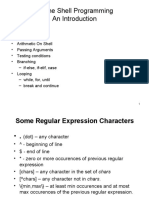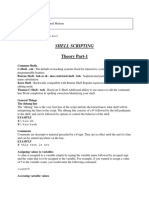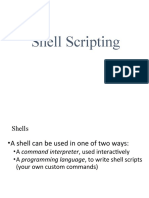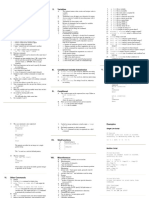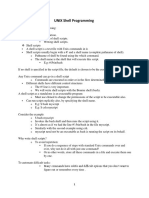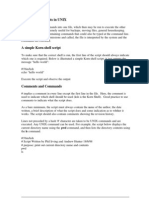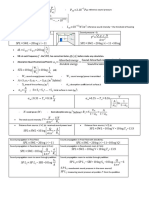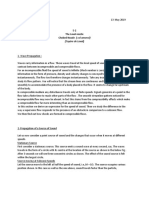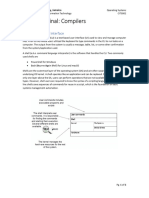0% found this document useful (0 votes)
55 views39 pagesIntro to Bash Shell Scripting
The document discusses shell scripting in Unix/Linux systems. It covers:
1) Shells can be used interactively or as programming environments through shell scripting, with bash being the default shell.
2) Basic I/O statements like echo and read are used to display text and get user input. Shell scripts are stored as files with a .sh extension.
3) Special symbols like #, $, \, ', and {} have specific meanings in shell scripts. Variables, loops, conditional statements, and tests allow for programming logic and flow control.
Uploaded by
hasan bishCopyright
© © All Rights Reserved
We take content rights seriously. If you suspect this is your content, claim it here.
Available Formats
Download as PDF, TXT or read online on Scribd
0% found this document useful (0 votes)
55 views39 pagesIntro to Bash Shell Scripting
The document discusses shell scripting in Unix/Linux systems. It covers:
1) Shells can be used interactively or as programming environments through shell scripting, with bash being the default shell.
2) Basic I/O statements like echo and read are used to display text and get user input. Shell scripts are stored as files with a .sh extension.
3) Special symbols like #, $, \, ', and {} have specific meanings in shell scripts. Variables, loops, conditional statements, and tests allow for programming logic and flow control.
Uploaded by
hasan bishCopyright
© © All Rights Reserved
We take content rights seriously. If you suspect this is your content, claim it here.
Available Formats
Download as PDF, TXT or read online on Scribd
/ 39
























